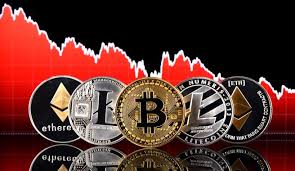
Crypto Trading Trends: An In-Depth Analysis
The world of cryptocurrency is constantly evolving, driven by technological advancements, market dynamics, and the behavior of traders and investors. In this article, we will delve deep into the recent Crypto Trading Trends https://www.newsvoir.com/index.php?option=com_content&view=catnews&catid=148&Itemid=37&page=65, identify key patterns, and explore what they mean for both seasoned traders and newcomers in the digital asset space.
The Rise of Institutional Investment
Over the past few years, there has been a notable uptick in institutional investment in cryptocurrencies. Hedge funds, asset managers, and even public companies have begun to allocate portions of their portfolios to digital assets. This trend is significant as institutional investors bring with them a wealth of experience, capital, and credibility to the market.
One of the key drivers behind this trend is the growing acceptance of cryptocurrencies as an asset class. Large institutional investors are increasingly viewing digital currencies as a hedge against inflation and economic uncertainty. As traditional markets face volatility, many are looking to diversify their holdings, with Bitcoin often leading the charge.
Furthermore, this influx of institutional money has led to increased liquidity in the market, which can help stabilize prices and reduce volatility in the long run. Major players like Grayscale, Galaxy Digital, and MicroStrategy have paved the way for others, demonstrating that cryptocurrencies can be a legitimate part of investment portfolios.
Technological Innovations and DeFi
Another trend reshaping the landscape of crypto trading is the rise of Decentralized Finance (DeFi). DeFi platforms offer users the ability to lend, borrow, and trade assets without the need for traditional intermediaries. This innovation has opened up a realm of possibilities for traders, allowing them to engage in yield farming, liquidity mining, and other profit-making strategies that were previously unavailable.
As smart contract technology matures, DeFi protocols are becoming more sophisticated, providing users with enhanced security, efficiency, and accessibility. Furthermore, the introduction of Layer 2 solutions aims to address scalability issues faced by blockchain networks, making transactions faster and cheaper.
These advancements contribute to the overall demand for cryptocurrencies, further propelling their adoption. As users become more familiar with DeFi applications, it is expected that trading behavior will continue to evolve, moving towards a more decentralized future.
The Impact of Regulatory Developments
The regulatory landscape surrounding cryptocurrencies is another crucial factor influencing crypto trading trends. Governments and regulatory bodies worldwide are starting to take a more active role in overseeing digital assets. While some countries embrace cryptocurrencies, others remain skeptical.
In regions where clear regulations are established, such as the EU and the U.S., the market tends to experience more stability. Conversely, uncertainty can lead to significant price fluctuations. Traders must stay informed about regulatory changes that may affect their positions, as these developments can directly impact market sentiment.
The recent discussions around Central Bank Digital Currencies (CBDCs) add another layer of complexity. Many countries are exploring or even piloting their digital currencies, which could influence the overall adoption rate of cryptocurrencies. Traders need to keep an eye on these developments, as the global financial landscape stands on the brink of transformation.
Social Media and Influencer Impact

In the age of digital communication, social media has become a powerful tool in promoting and influencing crypto trading trends. Platforms like Twitter, Reddit, and TikTok have become hotspots for discussing cryptocurrency trends, investment strategies, and market insights. Influencers and public figures can sway public opinion, creating waves of buying or selling pressure.
For traders, this means it is essential to be aware of social media trends and community sentiment. Often, movements in price can be traced back to trending topics on social media platforms. The rise of meme coins, such as Dogecoin, illustrates the power of social media in driving demand and price dynamics.
However, this environment also raises questions about market manipulation and the reliability of information. Traders should exercise caution, as hype can lead to significant volatility, and speculative trading can result in substantial losses.
The Evolution of Trading Tools and Platforms
The tools and platforms available for crypto trading have come a long way. From basic exchanges to advanced trading platforms offering sophisticated capabilities, traders now have a plethora of options to choose from. The advent of Trading Bots, algorithmic trading, and Artificial Intelligence (AI) tools has further revolutionized the landscape.
Automated trading allows participants to execute trades based on predefined criteria, removing some of the emotional aspects of trading. This can lead to more disciplined trading strategies and better risk management. Moreover, features like real-time data analysis, charting tools, and customizable alerts empower traders to make informed decisions.
As technology continues to improve, it is likely that we will see even more advancements, including more robust risk assessment tools, enhanced security features, and seamless integration between traditional financial systems and cryptocurrency markets.
The Market Psychology Behind Trading Trends
Understanding market psychology is vital for successful trading. Emotions like fear, greed, and FOMO (Fear of Missing Out) play a significant role in driving trading behavior. Trends in crypto trading can often be linked to the collective psychology of market participants.
For instance, during bullish trends, traders may exhibit a herd mentality, leading to a rapid influx of capital and prices soaring. Conversely, in bear markets, fear and uncertainty can prompt mass sell-offs, driving prices down. By studying market sentiment indicators and social trends, traders can better position themselves to anticipate price movements.
Additionally, the concept of “market cycles” is significant in cryptocurrency trading. Historical patterns indicate that markets move through phases of accumulation, markup, distribution, and markdown. Recognizing where the market stands within these cycles can be crucial for making informed trading decisions.
Conclusion: Navigating the Future of Crypto Trading Trends
The trends in crypto trading are continually changing, influenced by technological advancements, institutional interest, regulatory developments, social media dynamics, and psychological factors. To navigate this complex landscape, traders must remain adaptable and informed.
As we look to the future, it is clear that cryptocurrencies will continue to play a pivotal role in the global financial ecosystem. Whether you are a seasoned investor or a newcomer, understanding these trends will be essential for making informed trading decisions.
The evolution of the cryptocurrency market presents numerous opportunities, but it is equally crucial to recognize the inherent risks. By staying updated on market developments and remaining vigilant, traders can better position themselves to capitalize on the dynamic world of crypto trading.
Leave a Reply